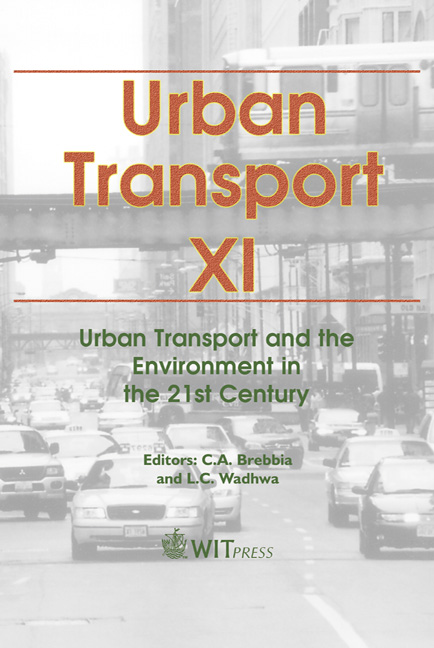The Role Of Town Energy Planning In Reducing Urban Transport Emissions
Price
Free (open access)
Transaction
Volume
77
Pages
12
Published
2005
Size
430 kb
Paper DOI
10.2495/UT050421
Copyright
WIT Press
Author(s)
F. Asdrubali & G. Baldinelli
Abstract
This paper presents the main results obtained in the Energy Plan of the town of Perugia (Italy), which prominently features traffic aspects. For each possible action in this field, a very detailed technical analysis has been carried out. The actions have been divided into five groups: - traffic planning (infrastructures, traffic restrictions, mobility management); - alternative mobility (lifts, escalators, surface undergrounds); - alternative fuels (biodiesel, bioethanol, \“white” gas oil); - alternative vehicles (electric, hybrid, fuel cells); - shared mobility (car pooling, car sharing and others). For each group, technical, environmental, social and economic aspects have been taken into account; particular emphasis has been put on energy saving aspects and on the evaluation of greenhouse gas emission reduction. This paper gives useful indications to municipalities of their choice of the best solutions to reduce traffic consumptions and impact on a local scale, according to current technologies. 1 Introduction Transport represents one of the main sources of energy consumption all over Europe (and Italy, as well), constituting one third of the entire energy demand, as shown in fig 1 [1, 2]. More than 75% of the population of the European Union lives in urban areas. Therefore urban transport accounts for a significant part of total mobility, and an even greater proportion of damage to the health of citizens and to buildings. One-fifth of all EU kilometres travelled are urban trips of under 15 km; between 1995 and 2030, total kilometres in EU urban areas will increase by 40%.
Keywords





